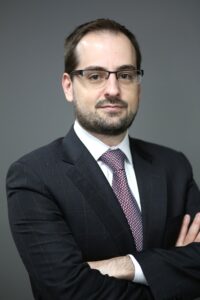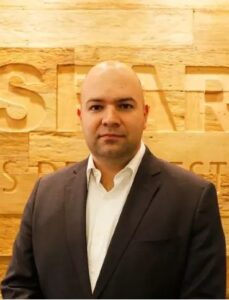New Players Make Credit Hedge Fund Industry More Dynamic
Just over a decade ago, the credit hedge fund industry was predominantly dominated by a handful of asset management companies (AMCs) associated with major banks. Furthermore, these firms had limited product diversity and employed relatively simplistic strategies. With the secondary market being virtually illiquid, asset management firms were compelled to hold onto their assets until their maturity dates.

“The funds didn’t operate under the market-to-market system; they functioned like machines. The industry was confined to a few key players, and liquidity was scarce,” recalls Guilherme Benites, Partner and Director at Aditus, a consultancy specializing in institutional investors. During times of crisis, all credit hedge funds were susceptible to herd behavior, experiencing simultaneous impacts.
However, the situation began to shift when independent asset management firms ventured into the credit fund industry, buoyed by the distribution of their products on investment platforms. Nonetheless, the limited liquidity in the secondary market hindered the development of more sophisticated strategies and products.
This situation persisted until October 2019, when investors recognized that the market reference rate, CDI, had reached historically low levels, prompting a massive wave redemptions. A similar scenario unfolded during the Covid-19 pandemic, but on a much larger scale. All fund managers faced a surge in withdrawal requests and began offloading their assets, only to find a lack of buyers in the secondary market. Bond spreads surged significantly from around CDI + 1.30% or 1.40% to CDI + 5.5% or even higher.
In the wake of this challenging crisis, other types of investors identified an interesting opportunity to engage in debt asset trading. Bank treasuries, independent asset management firms, and even major fund managers recognized the potential for diversifying their product strategies. “Since 2020, prominent asset management firms have introduced new credit strategies, and from 2021 onwards, they have expanded their offerings of credit funds. Today, we have a significantly larger number of players, which is highly beneficial for promoting liquidity in the secondary market,” Mr. Benites remarks.
He highlights assets associated with major banks, particularly Itaú Asset and Bradesco Asset, as institutions that offer a diverse range of funds. As for independent asset management firms, he mentions JGP, Sparta, and ARX as companies that have focused on this segment and continue to thrive in the debt market.
Proprietary index
JGP was one of the AMCs that stood out in the hedge fund and credit hedge fund space in recent years. “We were among the first to expand our presence in the market and establish a broader platform, offering equity, credit, and structured funds. It all began in 2008 when we brought in an equities team,” explains Alexandre Muller, Partner and Credit Portfolio Manager at JGP.

In 2014, the asset management company formed a credit team and subsequently created specialized teams for structured funds, including special situations and ESG. Mr. Muller emphasizes that they anticipated a significant shift in how companies in Brazil sought funding. “Until 2016, the prevailing funding model in Brazil relied heavily on subsidized credit, with limited activity in the capital market. This prevented companies that could have accessed the debt market from doing so, as they were reliant on state-owned banks,” he points out.
Therefore, they anticipated that fiscal restrictions would be implemented to promote a more sustainable relationship. The shift began in 2016, during Michel Temer administration, with the introduction of the Spending Ceiling Law. “At that time, interest rates were lower, and the capital market was evolving fast. State-owned banks were scaling back their operations and redirecting resources to reduce the federal debt,” Muller recalls.
With a dedicated team focused on hedge and credit hedge funds since 2014, JGP has significantly expanded its offerings in credit and structured products. One of their key differentiators has been the development of a data-driven fund management methodology aimed at reducing subjective decision-making. The company has made strategic investments in hiring computer scientists and acquiring systems.
“We currently have four programmers in the credit team, and across the entire company, we have 15 computer scientists who contribute in various areas. Unlike equities, we noticed a lack of accessible data in the debt market,” comments Mr. Muller. As the debt market operates primarily as an over-the-counter market, obtaining reliable data was a challenge. In order to implement their data-driven approach, JGP had to build proprietary datasets that served as a source for backtesting simulations in their portfolio.
“During this process, we compiled a vast dataset that, at one point, we considered making some of it freely available to the market. We believed this would help investors gain a better understanding of the debt market”, explains Mr. Muller. This initiative led to the creation of the Idex CDI index by JGP. However, he adds that while many market players now utilize this data, it only represents a fraction of JGP’s extensive database.
In terms of products, JGP has expanded its offerings to include four main groups of funds: hedge funds, equity funds, credit hedge funds, and structured funds. Within the structured funds category, they offer a diverse range of options such as infrastructure funds, ESG funds, agribusiness-related funds, and funds catering to companies facing special situations.
The fund manager emphasizes the potential opportunities in top-tier companies, considering the current high spreads may stabilize in the near future. Furthermore, he sees promising prospects in companies undergoing special situations that require assistance with restructuring efforts and the monetization of legal assets.
Credit Focus
With a 30-year history, Sparta is an established asset management company. However, it wasn’t until 2010 that the company shifted its focus to credit funds. Currently, Sparta manages approximately BRL 8 billion in assets, with the majority of its investments allocated to corporate bonds.

“We ventured into debt investments because there were only a few independent managers doing so at the time. Many firms were focused on equities and macro hedge funds, while debt markets were relatively untapped. Only the asset management arms of major banks offered fixed-income and debt funds. We spotted the opportunity, and our business expanded significantly,” explains Ulisses Nehmi, CEO of Sparta.
Over the past five years, the number of independent asset management companies specializing in high-grade debt assets has increased, although they still constitute a smaller group compared to hedge and equity funds. Sparta offers a range of strategies, including traditional fixed-income funds, access to bank platforms, pension funds, and infrastructure-related funds (debêntures incentivadas, in Portuguese).
He highlights that after the onset of the pandemic, there was a surge in the emergence of new credit strategies. However, initially, investors were reluctant to invest in debt assets due to the uncertainty surrounding the economy. “At that time, the future of the economy was highly uncertain, so even though companies were not facing immediate productivity issues, investors were hesitant to take on additional risks.”, he says.
However, in 2021, as the process of monetary tightening commenced, investor interest in post-fixed bonds was reignited. Funds were able to raise more capital as from March 2021, leading to increased demand and a subsequent gradual reduction in spreads.
“It brought funds back to the debt market. On one hand, investors found debt returns attractive, but on the other hand, risk aversion was still prevalent. Funds that focused on investing in top-tier companies with high credit ratings were able to raise significant capital,” explains Mr. Nehmi.
The AMC recently introduced a series of listed funds, with one launched in December 2021 and two more in early 2023. Among these funds, one specifically focuses on investments in agribusiness assets and offers tax benefits for retail investors. “The listed fund is not impacted by withdrawals. Investors who would like to redeem their quotas may just sell them in the secondary market. Thus, the fund manager can maintain investments in less liquid assets,” highlights Mr. Nehmi.
Product diversity
Bradesco Asset, an asset management company (AMC) associated with a prominent financial institution, has emerged as

another notable case. Over the past few years, the AMC has expanded its range of credit funds and currently offers a comprehensive selection of products within the segment, covering almost all types of credit funds, with the exception of distressed assets funds. “We value this industry and, thus, we offer almost all kinds of credit funds,” notes Ana Rodela, Head of Debt Trading at Bradesco Asset.
With BRL 220 billion in assets under management, Bradesco Asset predominantly allocates its portfolio to high-grade assets. They cater to investors with varying risk profiles, providing options for conservatives, moderates, and risk-takers alike. In addition to their diverse offerings, Bradesco Asset provides infrastructure-related funds tied to both the CDI benchmark and the consumer price index IPCA, along with offshore credit hedge funds.
One of Bradesco Asset’s recent additions is their high yield segment, which launched the country’s first listed fund of its kind in 2019. The initial fund has a maturity period of seven years, and the AMC is preparing to introduce the second tranche. Looking ahead to 2023, Bradesco Asset has plans to introduce receivables funds (FIDC) and an agribusiness-related fund.

